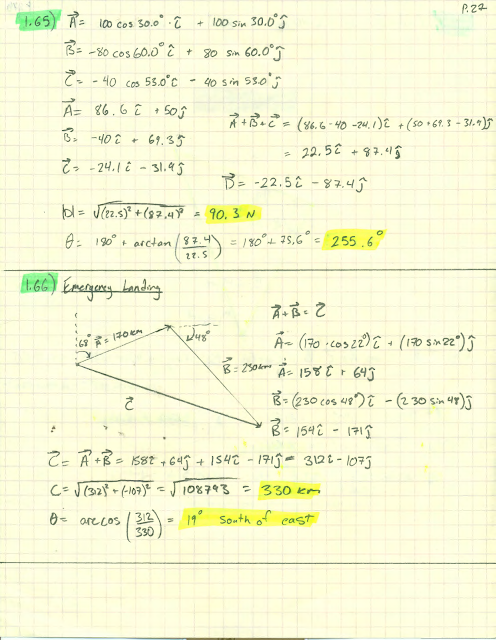1.62 Iron has a property such that a $1.00 m^3$ volume has a mass of $7.86 \times 10^3 kg$ (density equals $7.86 \times 10^3 kg/m^3$). You want to manufacture iron into cubes and spheres. Fina a) the length of the side of a cube of iron that has a mass of 200.0 g; b) the radius of a solid sphere of iron that has a mass of 200.0 g.
1.63 a) Estimate the number of dentists in your city. You will need to consider the number of people in your city, how often they need to go to the dentist, how oftern they actually go, how many hours a typical dental procedure (filling, root canal, and so on) takes, and how many hours a dentist works in a week. b) Using your local telephone directory, check to see whether your estimate was roughly correct.
1.64 Physicists, mathematicians, and others often deal with large numbers. The number $10^100$ has been given the whimsical name googol by mathematicians. Let us compare some large numbers in physics with the googol. (Note: This problem requires numerical values that you can find in the appendices of the book, with which you should become familiar.) a) Approximately how many atoms make up our planet? For simplicity, assume the average atomic mass of the atoms to be 14 g/mol. Avogadro's number gives the number of atoms in a mole. b) Approximately how many neutrons are in a neutron star? Neutron stars are composed almost entirely of neutrons and have approximately twice the mass of the sun. c) In the leading theory of the origin of the universe that we can now observe occupied, at a very early time, a sphere whose radius was approximately equal to the present distance of the earth to the sun. At that time the universe had a density (mass divided by volume) of $10^{15} g/cm^3$. Assuming that $\frac{1}{3}$ of the particles were protons, $\frac{1}{3}$ of the particles were neutrons, and the remaining $\frac{1}{3}$ were electrons, how many particles then made up the universe?
1.65 Three horizontal ropes pull on a large stone stuck in the grounding, producing the vector forces $\vec{A}$, $\vec{B}$, and $\vec{C}$ shown in Fig. 1.31. Find the magnitude and direction of a fourth force on the stone that will make the vector sum of the four forces zero.
1.66 Emergency Landing. A plane leaves the airport in Galisto and flies 170 km at $68^\circ$ east of north and then changes direction to fly 230 km at $48^\circ$ south of east, after which it makes and immediate emergency landing in a pasture. When the airport sends out a rescue crew, in which direction and how far should this crew fly to go directly to this plane?




Chapter 2
ReplyDeleteIts gonna be a while before I get to Chapter 2... I'm working on Probability right now to prepare for an actuarial exam.
Deletegreat work sir
ReplyDelete